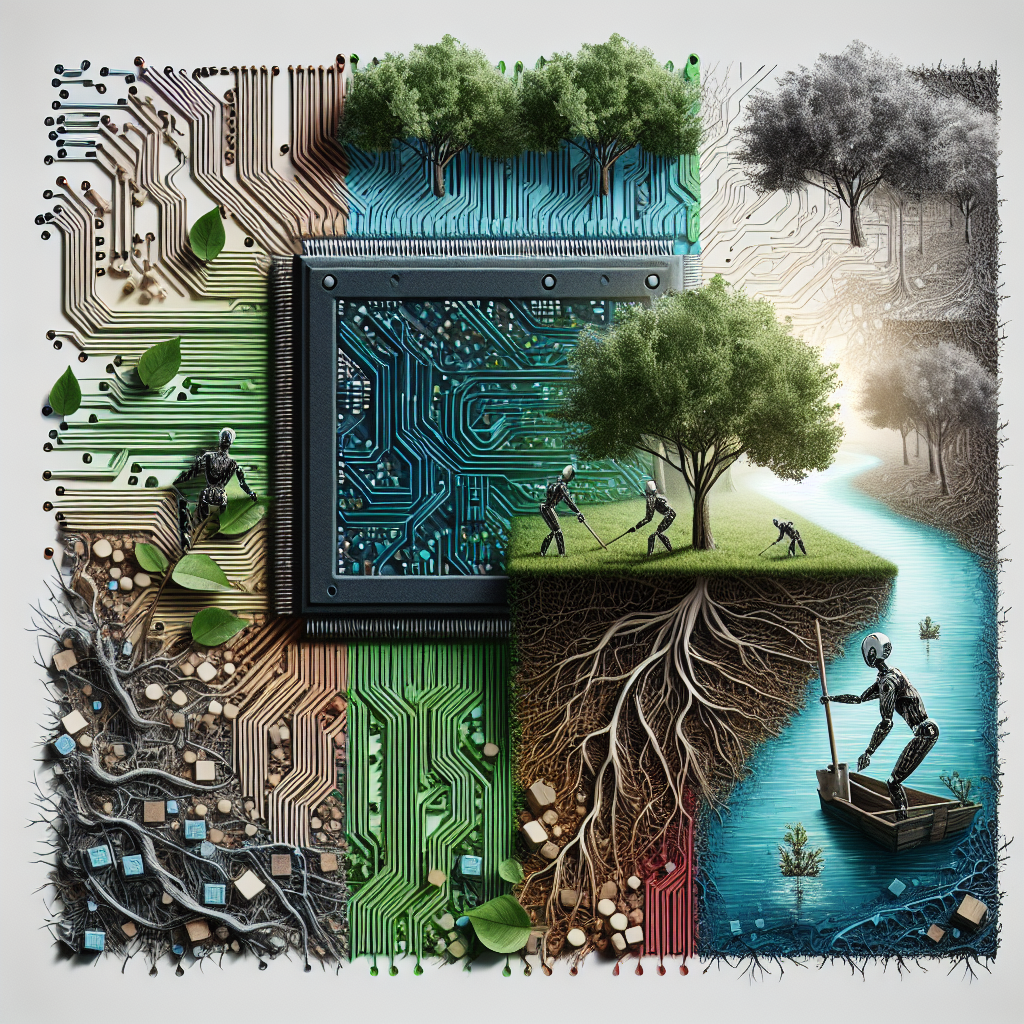AI for Ecosystem Restoration: Healing the Planet with Technology
In recent years, the world has witnessed an alarming decline in biodiversity and the degradation of ecosystems due to human activities such as deforestation, pollution, and climate change. Ecosystem restoration has become a critical need to mitigate these negative impacts and ensure the health and well-being of our planet for future generations. In this regard, artificial intelligence (AI) has emerged as a powerful tool that can be leveraged to help restore ecosystems and heal the planet.
AI refers to the simulation of human intelligence in machines that are programmed to think and learn like humans. By harnessing the power of AI, researchers and conservationists can analyze vast amounts of data, identify patterns, and make predictions that can inform decision-making and enhance ecosystem restoration efforts. From monitoring biodiversity to mapping habitats and predicting the impacts of climate change, AI has the potential to revolutionize the way we approach ecosystem restoration.
One of the key applications of AI in ecosystem restoration is in the monitoring of biodiversity. With the help of AI-powered tools such as remote sensing and camera traps, researchers can collect and analyze data on species populations, distribution, and behavior in real-time. This information is crucial for understanding the health of ecosystems and identifying areas that require intervention. AI can also be used to predict species interactions and ecosystem dynamics, helping conservationists develop more effective restoration strategies.
Another important application of AI in ecosystem restoration is in habitat mapping. By analyzing satellite imagery and drone footage, AI algorithms can create detailed maps of ecosystems, including vegetation cover, soil composition, and water sources. This information is essential for planning restoration projects and monitoring their progress over time. AI can also help identify areas that are at risk of degradation or loss, allowing conservationists to prioritize their efforts and allocate resources more efficiently.
AI can also be used to predict the impacts of climate change on ecosystems. By analyzing climate data and ecosystem models, AI algorithms can forecast how changes in temperature, precipitation, and other factors will affect biodiversity and ecosystem services. This information is crucial for developing adaptation strategies that can help ecosystems withstand the challenges of a changing climate. AI can also be used to optimize the design of restoration projects, ensuring that they are resilient and sustainable in the face of future environmental changes.
In addition to monitoring biodiversity, mapping habitats, and predicting climate impacts, AI can also help automate and streamline ecosystem restoration projects. By using AI-powered tools such as drones and robots, conservationists can plant trees, remove invasive species, and restore degraded habitats more efficiently and cost-effectively. AI can also be used to monitor the progress of restoration projects and make adjustments in real-time based on the data collected. This level of automation and precision can significantly accelerate the pace of ecosystem restoration and improve its success rate.
Despite its enormous potential, AI for ecosystem restoration also raises ethical and social concerns. For example, there are concerns about data privacy, transparency, and accountability in the use of AI for conservation purposes. Additionally, there are questions about who benefits from the technology and who bears the costs. It is crucial for researchers, conservationists, policymakers, and the public to engage in dialogue and collaboration to ensure that AI is used in a responsible and equitable manner for ecosystem restoration.
In conclusion, AI has the potential to revolutionize ecosystem restoration and help heal the planet. By harnessing the power of AI, researchers and conservationists can monitor biodiversity, map habitats, predict climate impacts, and automate restoration projects more effectively and efficiently. However, it is important to address ethical and social concerns and ensure that AI is used in a responsible and equitable manner. With the right approach, AI can be a powerful tool for restoring ecosystems and ensuring the health and well-being of our planet for future generations.
FAQs:
Q: What is AI and how is it used in ecosystem restoration?
A: AI refers to the simulation of human intelligence in machines that are programmed to think and learn like humans. In ecosystem restoration, AI is used to monitor biodiversity, map habitats, predict climate impacts, and automate restoration projects.
Q: What are some examples of AI-powered tools used in ecosystem restoration?
A: Some examples of AI-powered tools used in ecosystem restoration include remote sensing, camera traps, drones, robots, and algorithms for data analysis and modeling.
Q: What are the benefits of using AI in ecosystem restoration?
A: The benefits of using AI in ecosystem restoration include improved monitoring of biodiversity, more accurate mapping of habitats, better predictions of climate impacts, and increased efficiency and cost-effectiveness of restoration projects.
Q: What are some of the ethical and social concerns associated with AI for ecosystem restoration?
A: Some of the ethical and social concerns associated with AI for ecosystem restoration include data privacy, transparency, accountability, and equity in the use of the technology.
Q: How can stakeholders ensure that AI is used in a responsible and equitable manner for ecosystem restoration?
A: Stakeholders can ensure that AI is used in a responsible and equitable manner for ecosystem restoration by engaging in dialogue and collaboration, addressing ethical and social concerns, and promoting transparency and accountability in the use of the technology.

